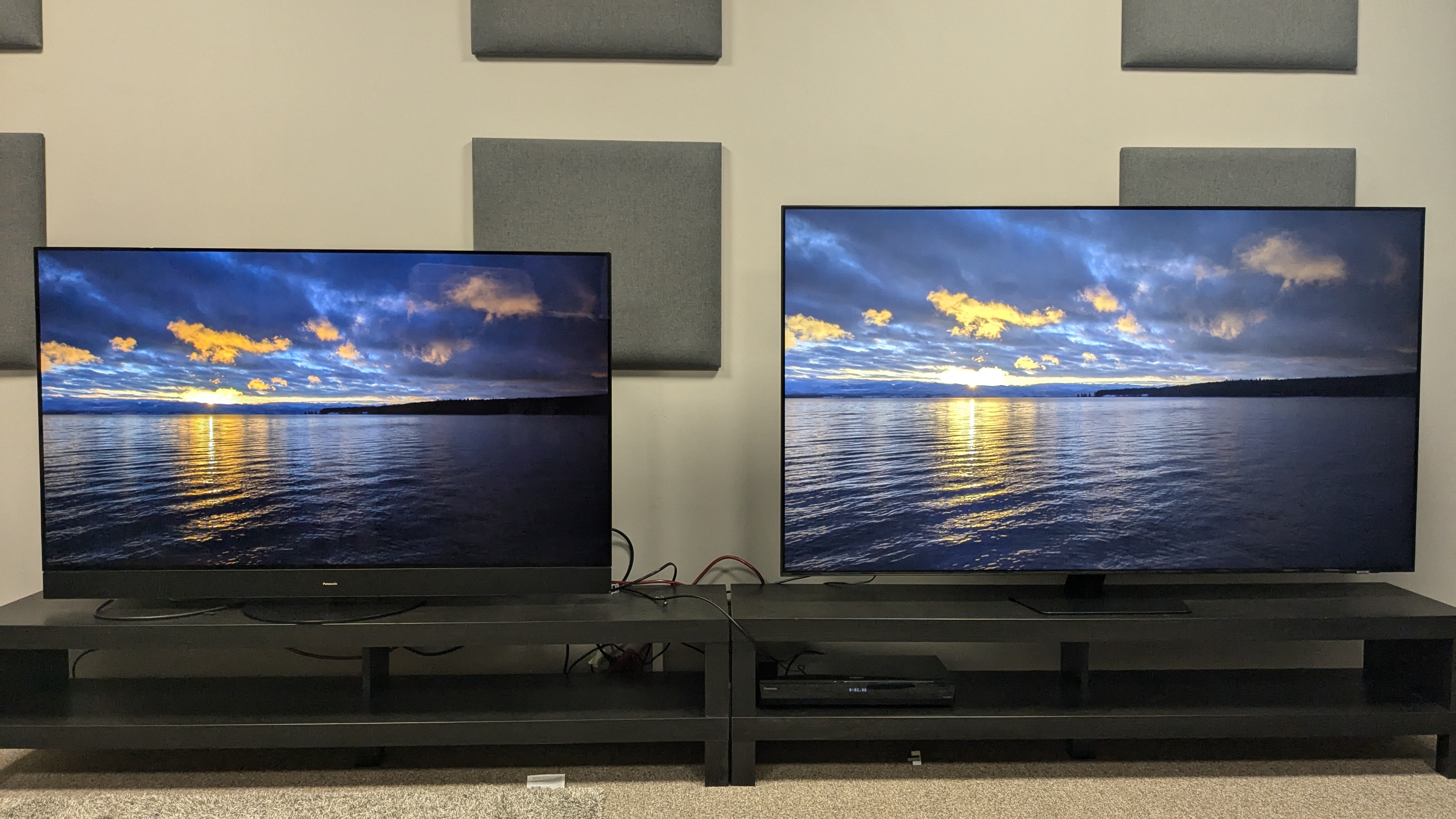Click here to visit Original posting
- The human eye perceives a 300-nit OLED the same as a brighter, 500-nit LED screen, Samsung Display claims
- Samsung's claim has been verified by UL Solutions, a global safety science company
- But OLEDs with higher actual light output are needed for more reasons than just 'perceived' brightness
Humans perceive a 300-nit OLED screen as having the same brightness as a 500-nit LED screen due to the great contrast ratio of OLED, according to Samsung Display.
Samsung Display made the claim regarding its own 300-nit QD-OLED panels. It also says its 500-nit QD-OLED panels were perceived the same as 767-nit LED screens, meaning a 1.5x perceived brightness increase on both panels, as reported by FlatpanelsHD.
It's worth noting that the quoted nit figure refers to fullscreen brightness, not peak brightness, which would be a much higher figure on both OLED and LED screens.
Samsung Display manufactures the QD-OLED panels used in some of the best OLED TVs and best gaming monitors, as well as RGB OLED screens for some of the best phones.
The firm has had the claim verified by UL Solutions, a global safety science company.
Perceived brightness can be quantified using the Perceptual Contrast Length (PCL) metric, which accounts for perceived contrast. When a bright pixel is next to a true black pixel, like in OLED, it appears brighter than a white pixel next to a similar pixel on an LED screen, which typically is more of a dark gray than black.
This perceived brightness claim could be seen as a win for OLED, especially after many years of being considered as falling behind LED screens when it comes to brightness in TVs. But while it's great for image quality, it doesn't help the real reason people like me have been hoping OLED TVs would become brighter.
The OLED brightness saga

OLED has become one of the most popular display panel technologies in recent years, and is featured in some of the best TVs on the market thanks to its superb contrast and vibrant color display.
One area OLED has always lagged is brightness. Only a few years ago, the most elite OLED TV would struggle to hit 1,000 nits peak brightness, which would be a breeze for the best mini-LED TVs. That has changed in recent years, with flagship OLEDs such as the LG G5 now surpassing 2,000 nits peak brightness (we measured 2,268 nits in Filmmaker Mode on a 10% HDR white window pattern in our LG G5 review), putting them right in line with their mini-LED rivals.
However, fullscreen brightness remains an obstacle for entry-level and mid-range OLEDs. I measured the LG C5 at 195 nits in Filmmaker Mode on a fullscreen (100%) HDR white window pattern, which is easily beaten by entry-level mini-LEDs such as the Hisense U6N (measured at 580 nits in the same conditions).
The LG G5, alongside the Samsung S95D from 2024, both exceeded 300 nits when measured with the same fullscreen pattern in Filmmaker Mode, meaning these would fit Samsung's claims (although Samsung only made the claim in reference to its own panels).
While higher perceived brightness is a benefit to OLED screens, Samsung's claim is only relevant to picture quality, and that's not where fullscreen brightness matters. There's one thing that brighter, flagship OLEDs can do that mid-range OLEDs simply can't: reduce screen reflections.
Screen reflections: OLED's enemy

Anyone who has used a typical OLED TV in even a mildly bright viewing environment will tell you just how reflective an OLED TV's screen can be.
Testing TVs day in-day-out, I can confirm just how troublesome OLEDs can be in this regard compared to LED screens.
Though there are ways of beating these mirror-like reflections – moving a light, for example – sometimes they can't be eliminated. TV manufacturers have made strides to combat reflections, however, such as Samsung with its excellent OLED Glare Free screen. But what would actually solve the issue is an OLED panel with higher fullscreen brightness.
Mini-LED and even some LED screens typically have fullscreen brightness much higher than OLED, and for that reason, don't suffer from reflections.
The LG G5, which uses LG's new 'four-stack' OLED panel, is one example of a brighter OLED, and it does a better job of limiting reflections compared to a standard W-OLED screen. But the LG C5, a step-down model from the G5, suffered from reflections during my testing, proving that a brighter panel can aid in beating reflections.
A brighter panel is also useful for watching sports in daytime conditions. It's no coincidence that a lot of our best TVs for sport are mini-LED! Sports benefits from a brighter image, so again a brighter panel is preferred.
So yes, while a confirmation of higher perceived brightness is good news for OLED picture quality, it's not the main reason I've hoped for OLEDs with higher actual brightness. That reason would be beating screen reflections in bright viewing environments.
You might also like
- I compared the LG G5 to one of the best mid-range OLED TVs, and the results surprised me
- I tested Samsung's new flagship OLED TV, and it fixes my one key flaw with its predecessor, and has mind-blowing brightness
- I tested a mid-range OLED and a flagship mini-LED 4K TV side by side – here's what you need to know before you buy